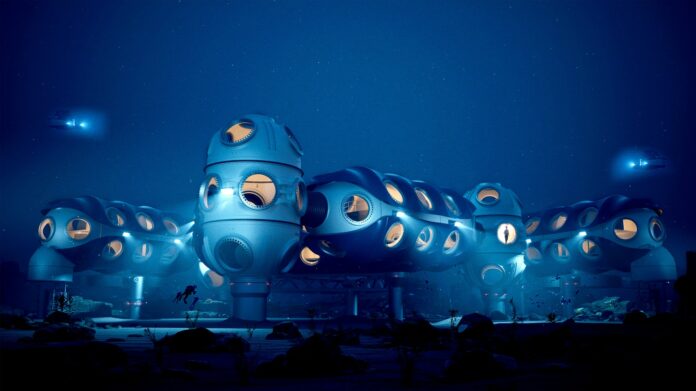An ocean technology and exploration company, DEEP, has unveiled plans to build a deep-sea underwater habitat project named Sentinel.
The Sentinel system creates an entirely new world of subsea living and working. This system is configurable and customizable and flexes seamlessly to accommodate short-term to semi-permanent deployments anywhere on the Continental Shelf.
Archaeology and recovery missions that used to take months using traditional air-diving techniques can now be completed in days or weeks with the help of a single Sentinel.
According to the DEEP, the Sentinel System can be the ‘International Space Station for the oceans.’
DEEP is working closely with the world-leading certification body DNV to ensure that Sentinel is the world’s first subsea habitat to achieve third-party certification. DEEP will maintain safety to fulfill its mission.
The underwater habitat Sentinel’s components can be configured, re-configured, and re-located without affecting the operation of neighboring Sentinels at depth between missions without the need to recover to the surface. It suits smaller, six-crew, short-term deployments as 50-crew, multi-nation, semi-permanent research stations.
The Sentinel System has been designed for operation in one atmosphere or ambient pressure.
The deep-sea underwater Sentinel system has a comfortable bedroom, and two sanitary spaces provide a toilet, shower, and privacy changing area, including storage lockers. Moreover, the Sentinel includes a fitted kitchen that enables the crew to cook.
Additionally, the underwater Sentinel System is equipped with a mezzanine deck; it is a flexible workspace that can be configured to suit a specific mission profile.
The Sentinels will have a service life of 20 years and can be redeployed to different locations worldwide to maximize their utilization and optimize their usability.
The Sentinel power systems are based on a micro-grid architecture that works with DEEP’s renewable power and satellite communications buoy.
“DEEP is leading the way in development and expansion of novel approaches for a sustained intersection of deep sea and humanity. As demonstrated through a continuous presence in space – time and exposure to a unique environment has led to significant breakthroughs in science, engineering, and a thirst to extend our reach beyond our planet,” said Dawn Kernagis, a crew member of the NASA NEEMO XXI undersea mission, in a statement.
Steve Etherton, President EMEA of DEEP, said, “We need to preserve the oceans. To do that, we need to understand them. The oceans sit at the center of many of the generational challenges the world is facing, and they also offer opportunities we have not even begun to comprehend. They are the source of at least every other breath we take. They influence the weather. They influence the climate. They influence us. Yet, this life-sustaining ecosystem remains surprisingly unknown. Through our innovative technology, DEEP will enable scientists to operate at depth for extended periods of time, and we hope, in some small way, will contribute to our understanding of this life-giving environment”.
DEEP says it aims for a “permanent human presence” under oceans from 2027. Sub-sea stations will enable researchers to operate continuously at a depth of roughly 200 m (around 656 ft) and be located off the UK coastline. Additionally, it will allow scientists to live underwater at depths of up to 28 days at a time.
The UK’s Southwest and Wales were selected as DEEP’s initial base because of the unique cluster of relevant marine engineering, diving, hyperbaric, and submersible expertise and links with the wider UK commercial and technical diving industry.
Comprehensively exploring the full extent of this part of the ocean, rather than just performing incursions from the surface, will represent a step-change in how scientists can observe, monitor, and understand the oceans.
